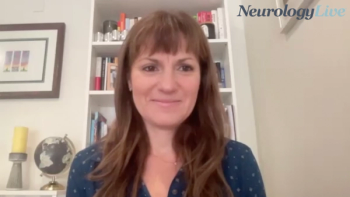
SUDEP Rates Greater Than Previously Reported, Higher Among Nonwhite Children
Study data from the NIH/CDC Sudden Death in the Young (SDY) Case Registry suggest that nonwhite children and infants have rates of SUDEP mortality 1.5 times higher than whites.
Findings from a large national registry, presented virtually at the
Additionally, the data from the National Institutes of Health (NIH) and Centers for Disease Control and Prevention (CDC) Sudden Death in the Young (SDY) Case Registry revealed that black and multiracial infants and children (38%; 0.32 per 100,000) have a
The overall rate of mortality was 0.26 per 100,000 infants and children. Previous literature has suggested the mortality rate from SUDEP is 0.16 per 100,000 infants and children, markedly lower than this new research suggests.
The findings were presented by Vicky Whittemore, PhD, health science administrator, National Institute of Neurological Disorders and Stroke, NIH, who said in a statement that “while SUDEP is traditionally considered a more significant issue in adults, these findings add to the growing research that it is more common in infants and children than we believed, particularly for certain groups.”2
This first-of-its-kind, population-based study included data on 1776 analyzable cases of those aged 0 to 17 years from 2015 to 2017 in 9 US states, of which 55 (3%) were deemed SUDEP and 11 (1%) were considered possible cardiac or SUDEP. Possible Cardiac/SUDEP was considered if the patient had a history of epilepsy and ≥1 of the following factors: Family history of a heritable cardiac condition or sudden death before age 50 years; Personal history of cardiac disease; clinical history suggestive of a cardiac cause.
READ MORE:
All told, the autopsy rates were lower for SUDEP (70%) compared to other categories of death in the Registry (range, 81% to 100%). Of the 47 total cases with an available autopsy, 10 (21%) had undergone neuropathological consultation. At time of death, 71% of cases were sleeping or resting and were not witnessed.
SUDEP was found to be equally as common among males than females. SUDEP was observed to occur at all ages, with higher mortality rates between ages 0–2 years (0.51 per 100,000 live births and children) and 14–17 years (0.32 per 100,000 live births and children).
The mortality rate between ages 0–1 year was 0.53 per 100,000 (n = 12), between ages 2–5 years was 0.18 per 100,000 (n = 8), between ages 6–9 years was 0.26 per 100,000 (n = 12), between ages 10–13 years was 0.17 per 100,000 (n = 8), and between ages 14–17 years was 0.31 per 100,000 (n = 15).
“Physicians often don’t discuss SUDEP with parents because they consider it rare and don’t want to frighten them. But it’s important physicians who have young patients discuss the risk with parents,” Whittemore added.
“This ongoing research is focused on understanding the underlying causes of SUDEP, the risk factors involved and how the brain changes over time in people with chronic epilepsy, which can contribute to SUDEP,” she said. “Based on this information, prevention strategies can be developed and disseminated.”
Discussing SUDEP with patients and caregivers has been a topic of ongoing conversation at the AES annual meeting for some time. At the 2019 annual meeting, Jeffrey Buchhalter, MD, pediatric epileptologist and adjunct professor of pediatrics, University of Calgary,
“If a child or an adult has ongoing tonic-clonic seizures, it needs to be brought to the attention of the patient and caregiver that they are at the highest risk for SUDEP,” he said. “There are some data that suggest that nocturnal supervision can influence the risk and prevent death, but they need to know about it. Disclosure is mandatory not only for nocturnal supervision, but to be aggressive about their own care in terms of pursuing additional medications, or surgery, or vagus nerve stimulation, or ketogenic diet.”
For more coverage of AES 2020,
REFERENCES
1. Whittmore V, Burns KM, Shaw E, Faulkner M, Tian N. Population-based surveillance of sudden unexpected death in epilepsy using the sudden death in the young case registry. Presented at AES 2020 Virtual Meeting: December 4–8, 2020. Abstract 405.
2. Sudden Unexplained Death in Epilepsy More Common in Younger Ages Than Thought Black and Multiracial Infants and Children 1½ Times More Likely to Die, Study Finds. News release. December 4, 2020. Accessed December 9, 2020. aesnet.org/sites/default/files/file_attach/580%20-%20n201130_SUDEP_FINAL.pdf
3. Harden C, Tomson T, Gloss D, et al. Practice guideline summary: Sudden unexpected death in epilepsy incidence rates and risk factors. Neurology. 2017;88(17). doi: 10.1212/WNL.0000000000003685.
Newsletter
Keep your finger on the pulse of neurology—subscribe to NeurologyLive for expert interviews, new data, and breakthrough treatment updates.































